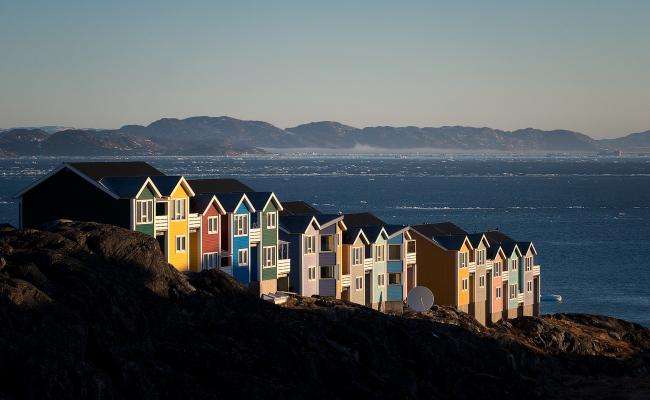High North Whitepaper: “Contributes to Further Militarization of Norway’s Most Important Strategic Neighborhood”

The USS Harry S. Truman transferring fuel cables over to KNM Thor Heyerdahl during Trident Juncture 2018. Lieutenant Colonel of the Norwegian Army and Professor at the Norwegian Defense Command and Staff College Tormod Heier argues that Norway should build up its own defense in order to become less reliant on the USA in the High North. (Photo: MCSN Joseph A.D. Phillips/U.S. Navy)
Last Friday, the Norwegian government launched a whitepaper on the High North. “The whitepaper appears to continue a policy that is mainly about playing hardball when it comes to Russia”, says Lieutenant Colonel of the Norwegian Army and Professor at the Norwegian Defense Command and Staff College Tormod Heier.
The whitepaper contains a series of overall goals for Norwegian High North politics. Several of these are related to the security policy the government wants to lead in the High North. The government wants to create peace, stability, and predictability as well as facilitate international cooperation and legal order in the Arctic.
Tormod Heier is Lieutenant Colonel of the Norwegian Army and Professor at the Norwegian Defense Command and Staff College. He is critical of several points in the High North whitepaper related to security politics.
“I am not sure about whether they will manage to reach these goals with the security policy descriptions accounted for”, Heier says and continues:
“The whitepaper appears to continue a policy that is mainly about playing hardball when it comes to Russia. There is not much emphasis on respecting Russian security interests when it comes to giving our eastern neighbor long strategic warning time in order for it to protect its strategic submarines against increased American and allied presence in the High North. This means the Russians will continue exercising and operating in the Arctic, and in particular westwards in the Norwegian Sea, to allow themselves to better protect their strategic bases on the Kola Peninsula.”
So you would argue that the security policy as presented in the High North whitepaper will make Russia continue reacting the way it does, with GPS jamming and re-arming in the north?
“Yes. The Russians initiate military countermeasures to face increased American presence, which Norway helps facilitate in the High North. Russia would probably not be as edgy if it were Norwegian forces operating in the Norwegian-Russian border areas. However, Norway no longer keep the American’s at an arm’s distance. On the contrary. The Norwegian “invitation policy” is continued in the High North whitepaper, which contributes to further militarization of Norway’s most important strategic neighborhood”, he argues.
The Norwegian “invitation policy” is continued in the High North whitepaper
According to Heier, this “invitation policy” increases the strategic importance of Northern Norway from a Russian and American point of view, and this makes it harder for Norway to reach the High North whitepaper goals of peace, stability, and predictability.
Classic security dilemma
A security dilemma in international relations can arise when a state wants to increase its own security, for example by increasing its military strength or entering into alliances. This can lead to other states reacting with similar measures, which increases tensions and can create conflicts, even when none of the sides really want it.
“The current Norwegian security policy creates a classical security dilemma. Because the way Russia reacts is to continue jamming, exercises, and re-arming the Norwegian-Russian border areas. Russia does not do this because it is afraid of Norway. Russia fears that Norway will be used as a springboard for American operations into Russia’s most important foreign policy instrument; nuclear forces located only 40 to 120 kilometers from the Norwegian border”, Heier says and continues:
“When the High North whitepaper facilitates more American operations based in Norwegian territory, the land value of Norway – and Northern Norway in particular – increases. This contributes to increased tension in the High North, which is a pity. Because with increased big power rivalry also comes a weakening the international legal order that is one of the goals of the High North whitepaper from the Norwegian government. The international legal order in the High North is weakened because big powers’ military activity in Norway’s back yard gets more prominent. And with that, security margins between the East and the West decrease.
The international legal order in the High North is weakened because big powers’ military activity in Norway’s back yard gets more prominent
“However, this is not only down to the fact that Norway is inviting more Americans in. It is also due to the fact that China and Russia have started cooperating more closely in the military area as well. And that worries the USA, as Chinese missiles may hit the USA from the High North.”
Reduce tension
What do you think Norway should do to reduce geopolitical tension in the High North?
“Norway should build up its own defense to a much higher extent, as fast as possible, so that Norwegian authorities themselves have the capacity to demonstrate credible visibility and presence in the border areas towards Russia. Today, the USA has to do so on behalf of Norway. It is hard to exit this security policy dilemma as it takes long time, probably decades, to build up a larger Norwegian military force that can solve national security challenges in its own neighborhood itself”, he says and adds:
“The High North whitepaper disappoints me in one area in particular, and that has to do with low tension. You may have expected specific initiatives that could contribute to decreasing tension in the north. But these are absent, as the strategy towards Russia is about playing hardball using American forces. The only good thing is that Norway and Russia in 2019 established a telephone connection between their respective defense leaderships. That is good. There should be more of that. Because if we are to avoid war, we have to learn to see an issue through the opponent’s eyes. A case always has at least two sides.
However, this is not only down to the fact that Norway is inviting more Americans in. It is also due to the fact that China and Russia have started cooperating more closely in the military area as well
Heier sums up the High North whitepaper in the following way:
“The High North whitepaper is as expected. Those living in the High North, on the Norwegian side of the border, will in future years continue rising on the Russian list of targets to be affected if a crisis were to emerge, or given a tense situation between the East and the West in the High North. And by that I primarily refer to critical digital infrastructure. The government’s stressing international cooperation is a good thing, because it ties Norwegian security to a larger international whole, amongst others with the UN and the Law of the Sea regime. However, it may not help as long as Russia’s closest neighbor in the north invites its primary rival into its most important military strategic back yard in the Barents Sea”, he says in closing.
You can read the entire High North whitepaper here [Norwegian only].
Also read
This article was originally published in Norwegian and has been translated by HNN's Elisabeth Bergquist.






